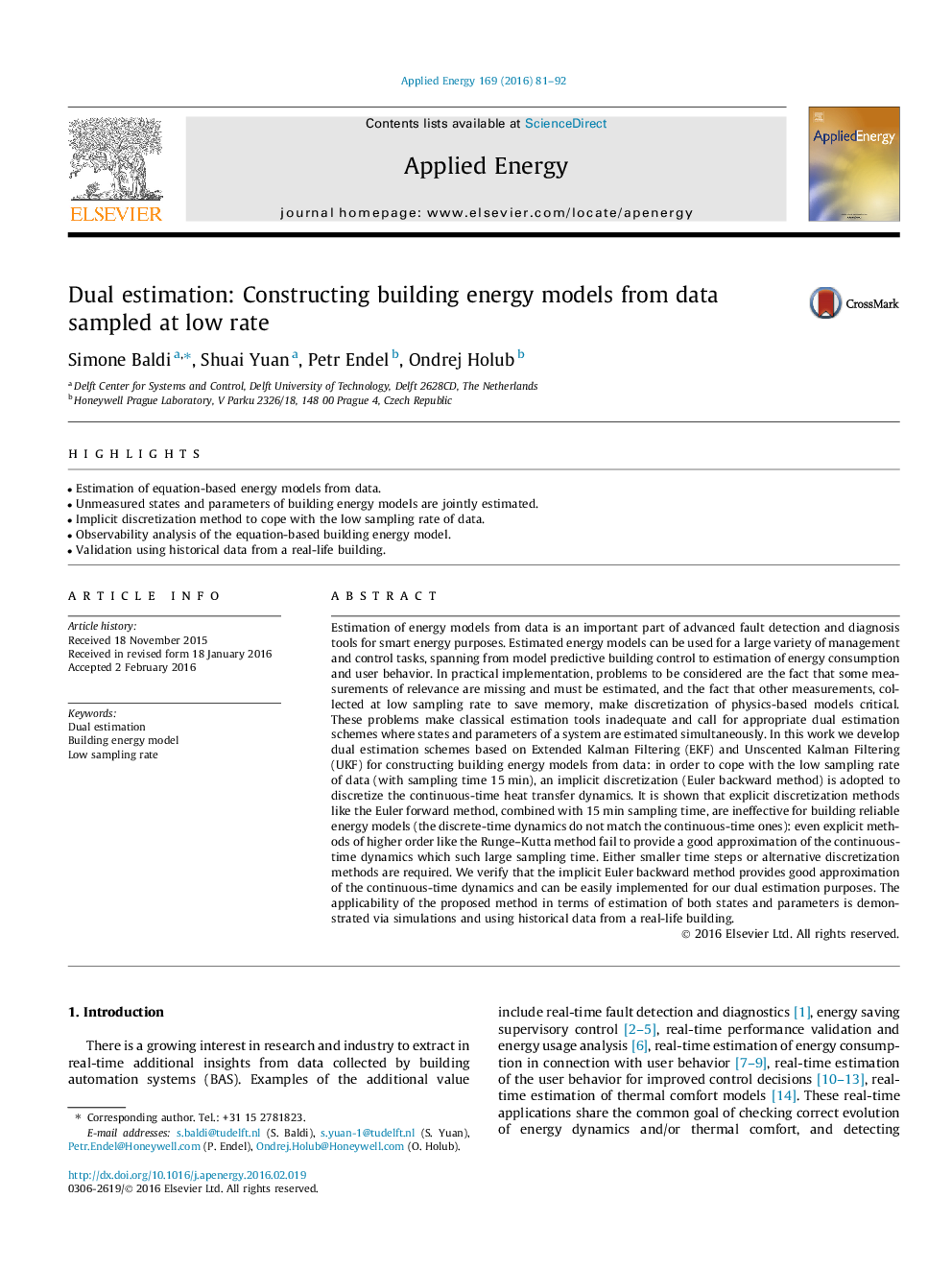| کد مقاله | کد نشریه | سال انتشار | مقاله انگلیسی | نسخه تمام متن |
|---|---|---|---|---|
| 6683443 | 501857 | 2016 | 12 صفحه PDF | دانلود رایگان |
عنوان انگلیسی مقاله ISI
Dual estimation: Constructing building energy models from data sampled at low rate
ترجمه فارسی عنوان
برآورد دوگانه: ساخت مدل های انرژی ساختمان از داده های نمونه برداری شده با نرخ کم
دانلود مقاله + سفارش ترجمه
دانلود مقاله ISI انگلیسی
رایگان برای ایرانیان
کلمات کلیدی
برآورد دوگانه، مدل انرژی ساختمان، نرخ نمونه برداری پایین،
موضوعات مرتبط
مهندسی و علوم پایه
مهندسی انرژی
مهندسی انرژی و فناوری های برق
چکیده انگلیسی
Estimation of energy models from data is an important part of advanced fault detection and diagnosis tools for smart energy purposes. Estimated energy models can be used for a large variety of management and control tasks, spanning from model predictive building control to estimation of energy consumption and user behavior. In practical implementation, problems to be considered are the fact that some measurements of relevance are missing and must be estimated, and the fact that other measurements, collected at low sampling rate to save memory, make discretization of physics-based models critical. These problems make classical estimation tools inadequate and call for appropriate dual estimation schemes where states and parameters of a system are estimated simultaneously. In this work we develop dual estimation schemes based on Extended Kalman Filtering (EKF) and Unscented Kalman Filtering (UKF) for constructing building energy models from data: in order to cope with the low sampling rate of data (with sampling time 15Â min), an implicit discretization (Euler backward method) is adopted to discretize the continuous-time heat transfer dynamics. It is shown that explicit discretization methods like the Euler forward method, combined with 15Â min sampling time, are ineffective for building reliable energy models (the discrete-time dynamics do not match the continuous-time ones): even explicit methods of higher order like the Runge-Kutta method fail to provide a good approximation of the continuous-time dynamics which such large sampling time. Either smaller time steps or alternative discretization methods are required. We verify that the implicit Euler backward method provides good approximation of the continuous-time dynamics and can be easily implemented for our dual estimation purposes. The applicability of the proposed method in terms of estimation of both states and parameters is demonstrated via simulations and using historical data from a real-life building.
ناشر
Database: Elsevier - ScienceDirect (ساینس دایرکت)
Journal: Applied Energy - Volume 169, 1 May 2016, Pages 81-92
Journal: Applied Energy - Volume 169, 1 May 2016, Pages 81-92
نویسندگان
Simone Baldi, Shuai Yuan, Petr Endel, Ondrej Holub,
